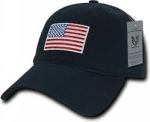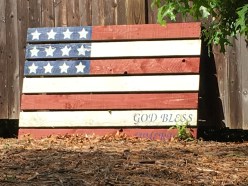 June 14 is Flag Day; a day to honor the flag of the United States of America. Our nation’s standard includes thirteen alternating red and white horizontal stripes representing the original states, plus a blue field gridded with fifty white stars: one for each current state.
June 14 is Flag Day; a day to honor the flag of the United States of America. Our nation’s standard includes thirteen alternating red and white horizontal stripes representing the original states, plus a blue field gridded with fifty white stars: one for each current state.
The United States Flag Code, drafted in 1923 by the National Americanism Commission of the American Legion, outlines respectful flag protocol. It became federal law in 1942. The Code specifies how to raise, fly, lower, fold, transport, and even dispose of a flag. It prohibits flying a flag tattered or upside down. It bans flags on clothing, except for patches on military, police, or firefighter uniforms, or worn by members of patriotic organizations. The flag can never be displayed in advertising.
1960’s protestors wore flags, dragged them through mud, and burned them. Among supporters, invoking the flag bolstered their claim of free speech. Detractors were enraged. By the time the Supreme Court upheld flag burning as a form of free speech in 1989, the emotional pulse of the stars and stripes was shifting right. Today, what some considered patriotic expression of free speech has become a symbol of national fealty: our flag is more often displayed on baseball hats and beer coolers than hoisted in protest.
Neither the left nor the right owns our flag. Whether a person wears a flag as protest or in pride, it is still a violation of the Flag Code.
American flag graphics are also integrated into art, echoing claims of free-speech versus nationalism. Jasper Johns’ surreal rendering, Flag, is embedded with scraps of newsprint and fabric. It hangs in the Museum of Modern Art. Wooden flags that display however many stars and stripes fit on a shipping pallet, are mounted on fences and outbuildings all across our nation.
In 2015-2016 I bicycled the 48 contiguous states and encountered dozens of folk-art flags. From rural Mississippi to rural Montana, the message they conveyed to me: ‘I am poor in material resources but proud in spirit.’ Every one of them warmed my heart.
When I returned home, I decided to make a wooden flag for my own yard. Cambridge, Massachusetts: urban, affluent; is markedly different from the economically declining, politically conservative locales where I discovered these constructions. Yet as citizens of the same country living under the same banner, I wanted to create a display that honors our mutual heritage and celebrates our commonalities, while conveying my own community’s vision of America.
 I assembled my flag from scrap wood and leftover paint, although I included the full complement of thirteen slats and fifty stars. I arranged the stars in a circle, reminiscent of Betsy Ross. Then, I made a conscious departure from my flag’s inspiration. I painted each star a different color: red, white, black, and yellow at the four compass points, with unique blends of these skin-tone colors for every star in-between.
I assembled my flag from scrap wood and leftover paint, although I included the full complement of thirteen slats and fifty stars. I arranged the stars in a circle, reminiscent of Betsy Ross. Then, I made a conscious departure from my flag’s inspiration. I painted each star a different color: red, white, black, and yellow at the four compass points, with unique blends of these skin-tone colors for every star in-between.
Our nation’s ideals have always been loftier than our reality. The white men who founded the United States created a more representative government than any of their time, but representation fell short of our total populace then; and it still falls short of our full citizenry today.
I call my assemblage the Constellation Flag: a constellation of stars that reflects the full human spectrum, brought together within one great, imperfect nation. Its iconography is rooted in our national standard; its meaning rooted in what that banner means to each of us. I planted it in my front yard with the hope that it offers a bridge to national division, perhaps might even leverage our historical icon forward. It is a flag that heralds the ideals we have long asserted. Perhaps someday we will make those ideals real.




I LOVE your flag, well done!
Thanks. Wouldn’t it be great to see more like it!
Pingback: Four Years On, What Trouble We Have Wrought | How Will We Live Tomorrow?